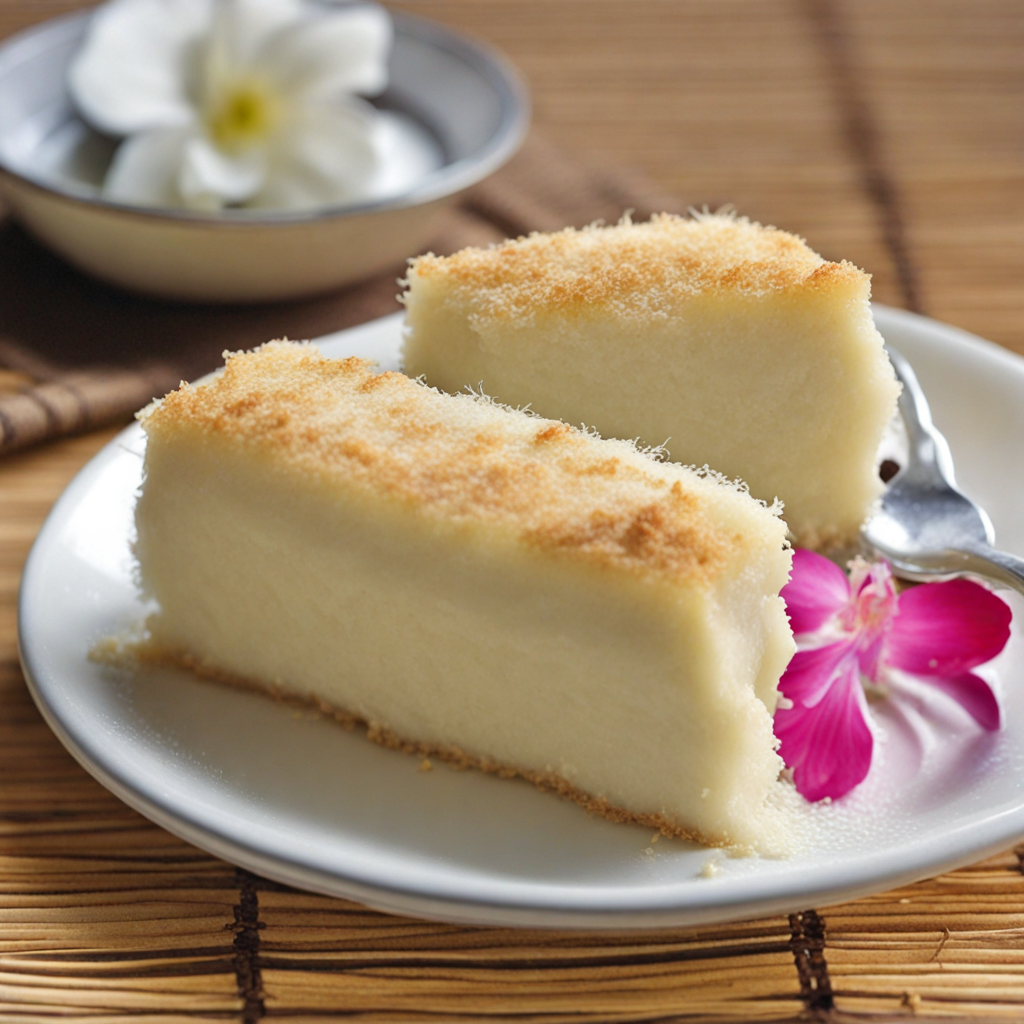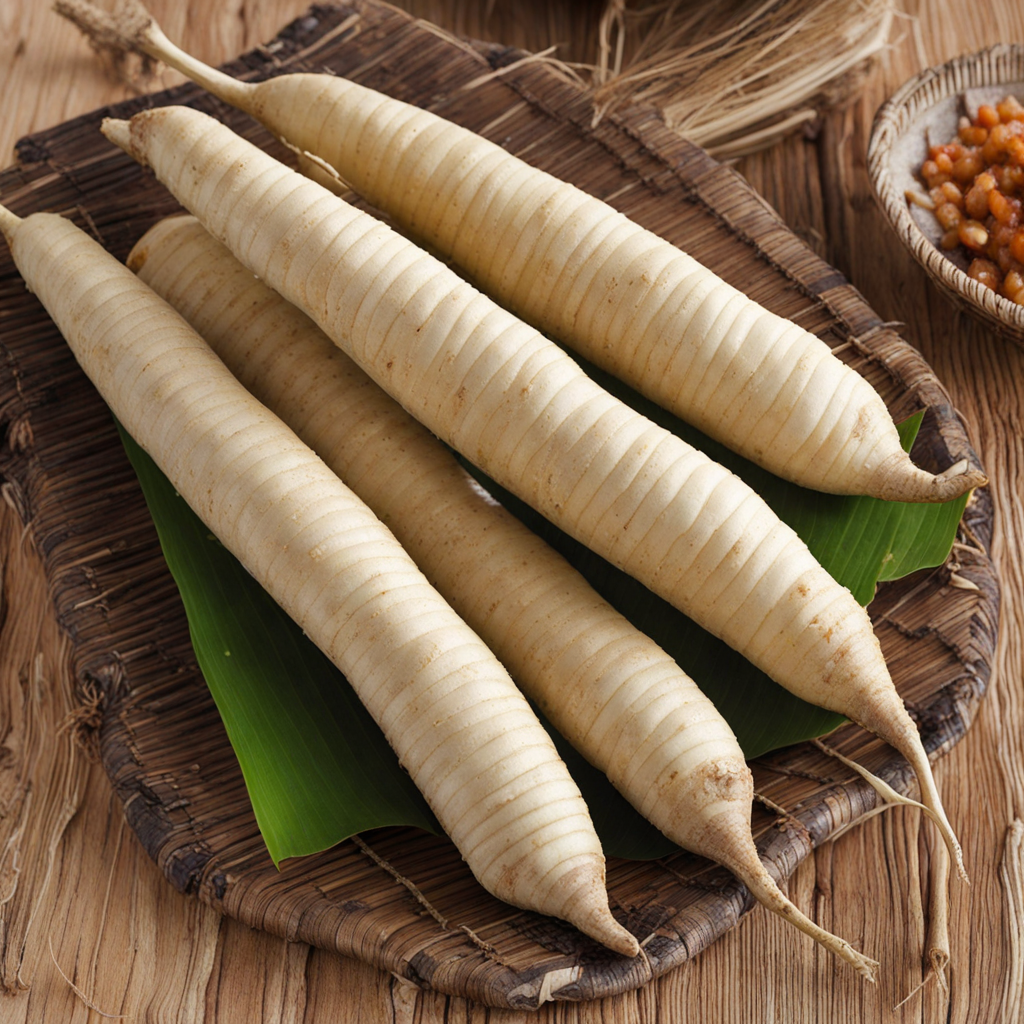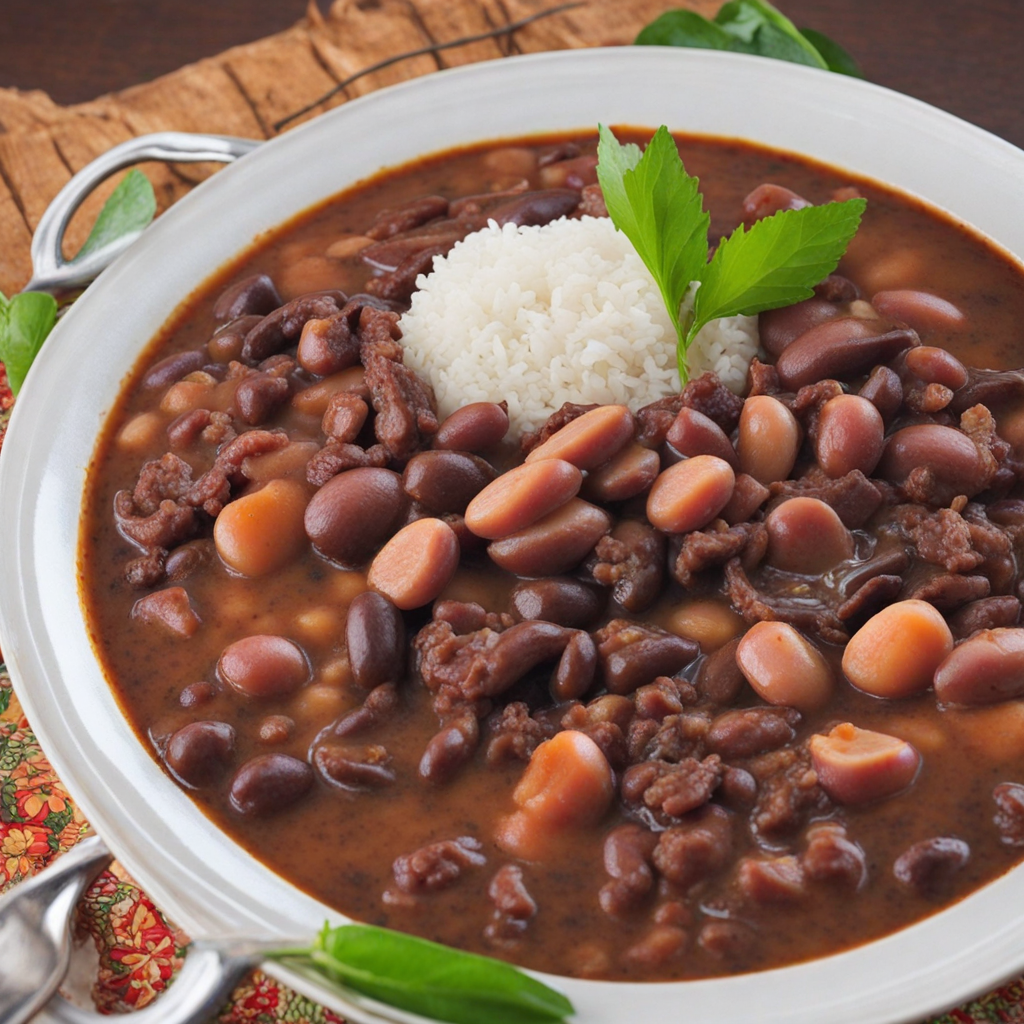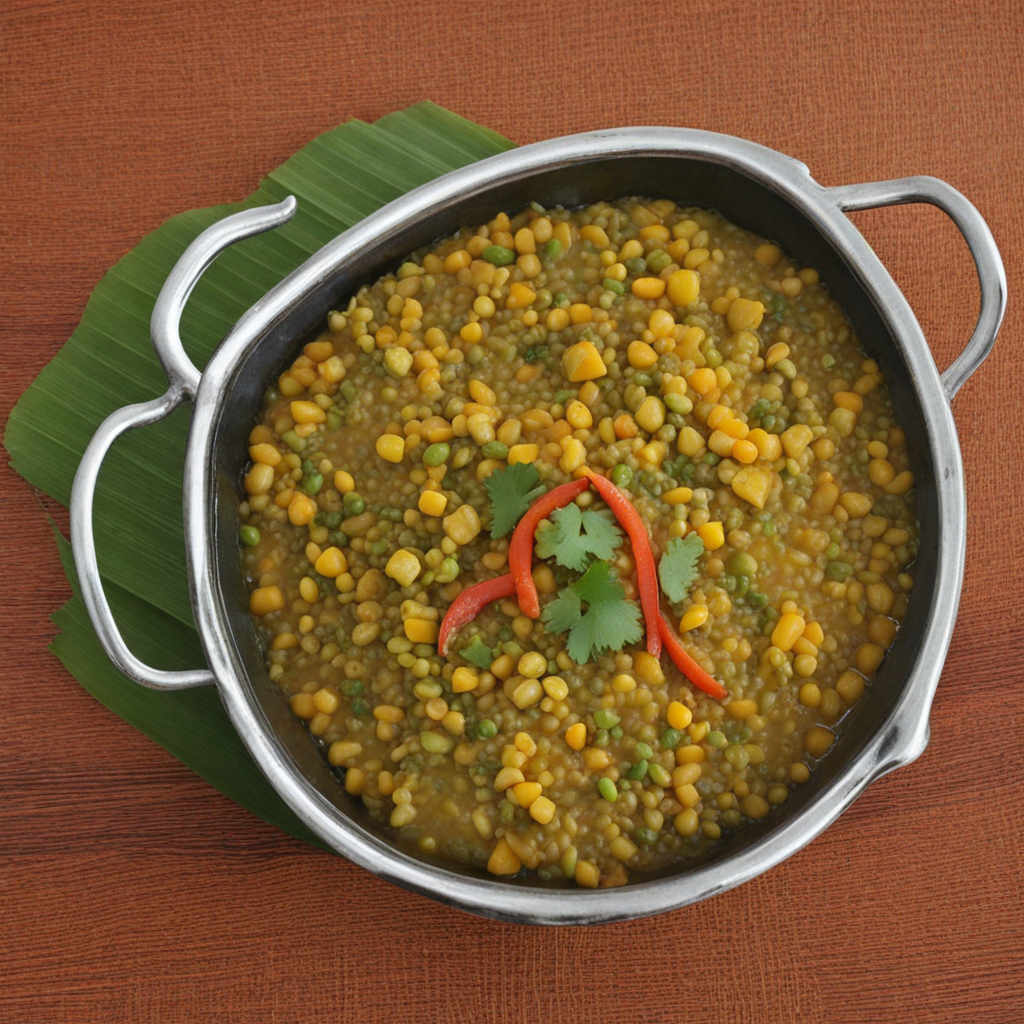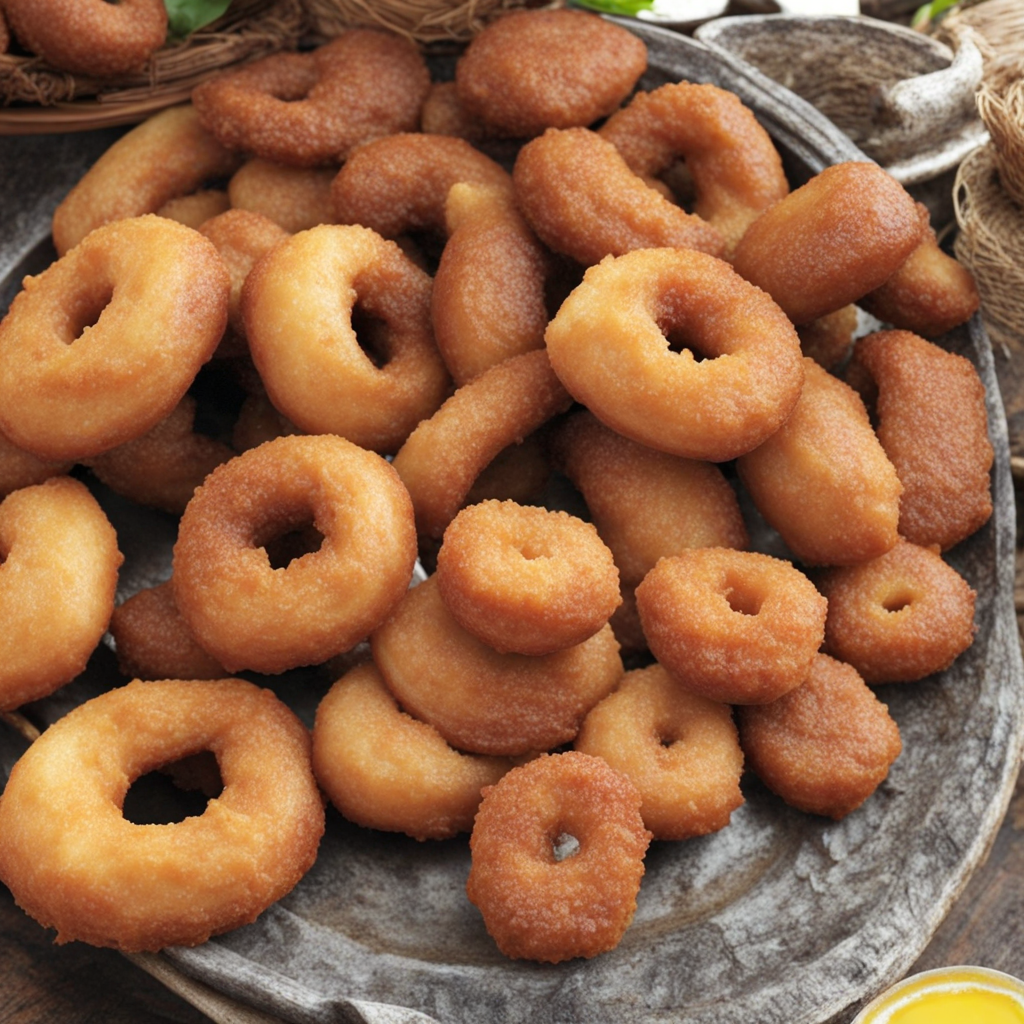Bibinka
Bibinka is a traditional Timorese dessert that captures the essence of the region's rich culinary heritage. Made primarily from rice flour, coconut milk, and sugar, this delightful treat is known for its unique texture and flavor profile. The key to a perfect Bibinka lies in the careful layering of the batter, which is poured into a mold and baked until it achieves a golden-brown crust. The result is a moist and slightly chewy cake that offers a satisfying contrast between its crispy exterior and soft interior. What sets Bibinka apart is its aromatic infusion of local ingredients, such as pandan leaves, which lend a subtle sweetness and a hint of floral fragrance. The use of fresh coconut adds a creamy richness, making each bite an indulgent experience. Often enjoyed during special occasions and celebrations, Bibinka is not just a dessert but a symbol of Timorese culture and community spirit. As you take a bite of Bibinka, you'll discover a harmonious blend of flavors that transports you straight to the heart of Timor-Leste. The subtle sweetness, combined with the nutty undertones of coconut, creates a comforting and satisfying treat. Whether enjoyed with a cup of coffee or as a standalone dessert, Bibinka is an inviting invitation to explore the vibrant culinary landscape of this beautiful Southeast Asian nation.
How It Became This Dish
The History and Cultural Significance of Bibinka in Timor-Leste Bibinka is a traditional dessert enjoyed in Timor-Leste, a small island nation in Southeast Asia, known for its rich cultural heritage and diverse culinary traditions. This coconut milk-based cake, often imbued with the fragrant flavors of pandan leaves, is not only a delectable treat but also a symbol of the nation’s history and community spirit. To understand the significance of bibinka, we must explore its origins, its evolution over time, and its place in the cultural tapestry of Timor-Leste. #### Origins and Ingredients Bibinka, in its simplest form, is made from rice flour, coconut milk, sugar, and pandan leaves. The use of rice flour is particularly noteworthy, as rice has been a staple in Southeast Asian diets for centuries, brought to the region through trade routes that spanned the Indian Ocean and the South China Sea. The arrival of coconut palms, which thrive in the tropical climate of Timor-Leste, further enriched the local culinary landscape. The sweet, creamy essence of coconut milk is a defining characteristic of bibinka, and it reflects the agricultural bounty of the region. The dessert is often baked in layers, with the batter poured into a mold and cooked over a charcoal fire. This traditional method imparts a slightly smoky flavor that enhances the sweetness of the dish. The use of pandan leaves, which are native to Southeast Asia, adds a vibrant green color and a unique aroma, elevating the sensory experience of bibinka. #### Cultural Significance Bibinka holds a special place in Timorese culture, often served during celebrations, religious ceremonies, and family gatherings. It is more than just a dessert; it embodies the spirit of sharing and community. In a country where communal bonds are strong and family ties are cherished, the preparation and consumption of bibinka provide an opportunity for people to come together. Traditionally, bibinka is made by women in the community, reinforcing gender roles and the importance of women's contributions to cultural practices. The act of making bibinka can be a communal event, where women gather to share recipes, stories, and laughter. This cooperation fosters a sense of belonging and continuity, allowing the younger generations to learn about their heritage through hands-on experiences in the kitchen. Moreover, bibinka is often associated with significant life events, such as weddings and religious festivals. Its presence at these occasions is a reminder of the importance of tradition and the role of food in marking life's milestones. Sharing bibinka with guests is a gesture of hospitality, reflecting the Timorese value of welcoming others into one’s home. #### Development Over Time The history of bibinka in Timor-Leste can be seen as a reflection of the broader socio-political changes that have shaped the nation. Timor-Leste, formerly known as East Timor, was colonized by the Portuguese in the 16th century, which introduced European cooking techniques and ingredients to the local cuisine. The legacy of Portuguese cuisine can be seen in various Timorese dishes, but bibinka has remained distinctly local, maintaining its traditional roots. After gaining independence in 2002, Timor-Leste emerged from a period of conflict and turmoil. The newfound freedom ignited a resurgence of national pride, including a revival of traditional culinary practices. Chefs and home cooks alike began to embrace bibinka as a symbol of Timorese identity, showcasing it in restaurants and at cultural events. Its preparation often incorporates local ingredients, celebrating the region’s agricultural diversity and further anchoring the dish in the Timorese landscape. As globalization has influenced the culinary world, bibinka has also evolved. Contemporary interpretations of the dessert have emerged, with variations that include different flavor combinations and presentations. Some modern renditions of bibinka incorporate chocolate, fruit, or even spices, showcasing the adaptability of traditional dishes in response to changing tastes and preferences. This evolution reflects a broader trend in Timorese cuisine, where traditional foods are reimagined while still honoring their roots. #### Bibinka Today In present-day Timor-Leste, bibinka continues to be a beloved dessert, enjoyed by locals and visitors alike. It is commonly found at street food stalls, markets, and restaurants, often served alongside coffee or tea. The dessert has become a culinary ambassador for Timor-Leste, showcasing the unique flavors and cultural richness of the nation to the world. Additionally, the growing interest in Timorese cuisine on the international stage has prompted chefs and food enthusiasts to explore and celebrate traditional dishes like bibinka. Food festivals, culinary competitions, and cultural exchanges have created platforms for Timorese cuisine to shine, allowing bibinka to gain recognition beyond its borders. In recent years, there has also been a push towards sustainable and local food practices in Timor-Leste. The emphasis on using fresh, locally sourced ingredients for making bibinka resonates with the global movement towards sustainable gastronomy. This focus not only supports local farmers and producers but also reinforces the connection between food, culture, and environment. #### Conclusion Bibinka is more than just a dessert in Timor-Leste; it is a culinary symbol of resilience, community, and cultural identity. From its traditional preparation methods and ingredients to its role in significant life events, bibinka encapsulates the spirit of the Timorese people. As the nation continues to navigate the complexities of modernity while honoring its rich heritage, bibinka stands as a testament to the enduring power of food to unite, celebrate, and tell the story of a people. Through every layer of this sweet, fragrant cake, one can taste the history, culture, and love that define Timor-Leste.
You may like
Discover local flavors from Timor-leste


